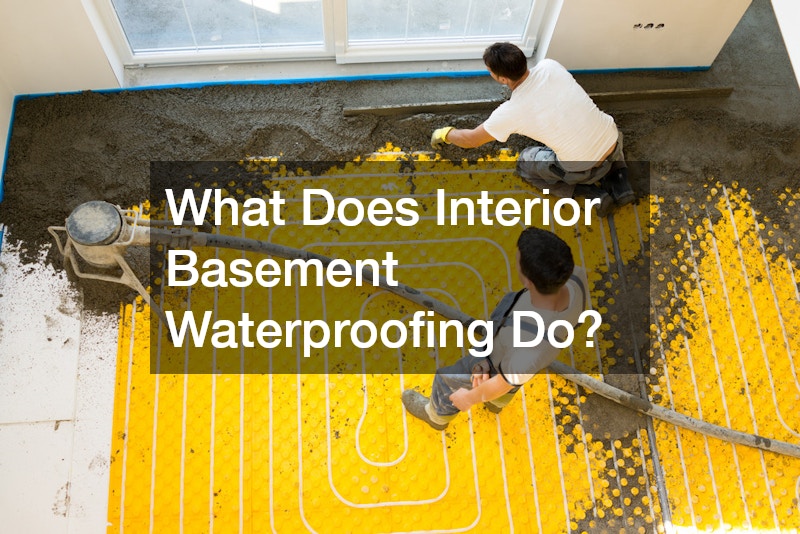
Looking into finding an essential process designed to protect your home from the damaging effects of water intrusion. If so, then interior basement waterproofing is the answer. This method involves various techniques and systems that work together to keep your basement dry, preventing issues such as mold growth, structural damage, and unhealthy living conditions. Understanding what waterproofing does can help homeowners make informed decisions about protecting their property.
One of the primary functions of interior basement waterproofing is to manage water that enters your home through the foundation walls or floor. This can happen due to heavy rainfall, rising groundwater, or poor exterior drainage. When water seeps into your basement, it can lead to numerous problems, including musty odors, water stains, and the deterioration of building materials. By installing an effective waterproofing system, you can intercept and redirect this water before it causes damage.
A common component of interior basement waterproofing is the installation of a drainage system along the perimeter of the basement floor. This system typically consists of a trench that is dug around the edges of the floor, where a perforated pipe is laid to collect water. The water is then directed to a sump pump, which expels it outside the home. This method not only prevents water from accumulating in your basement but also helps reduce hydrostatic pressure on the foundation, which can lead to cracks and leaks.

Another key aspect of basement waterproofing is sealing any cracks or gaps in the foundation walls and floors. These openings can serve as entry points for water, allowing moisture to penetrate your basement. By applying specialized sealants or using hydraulic cement, these vulnerabilities can be effectively sealed, creating a barrier against water intrusion.
Additionally, interior basement waterproofing can include the use of vapor barriers and dehumidifiers to control moisture levels within the basement. High humidity can contribute to mold growth and create a damp environment, even if there isn’t standing water. Vapor barriers are applied to walls and floors to prevent moisture from seeping through, while dehumidifiers help maintain a dry atmosphere.
Interior basement waterproofing is a comprehensive approach to keeping your basement dry and your home safe. By addressing water intrusion, sealing cracks, and managing humidity, this process can prevent costly repairs and ensure a healthy living environment. Homeowners who invest in this kind of waterproofing gain peace of mind, knowing their property is protected from the harmful effects of water damage.
